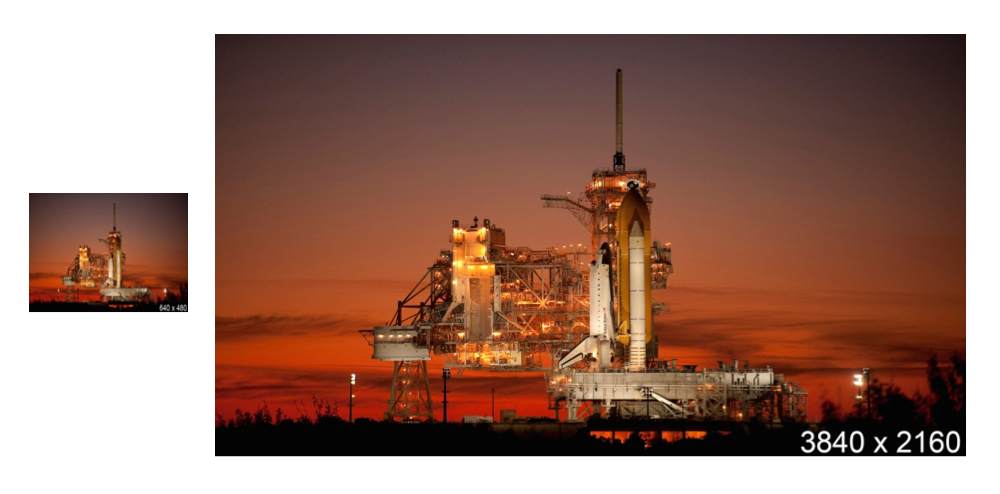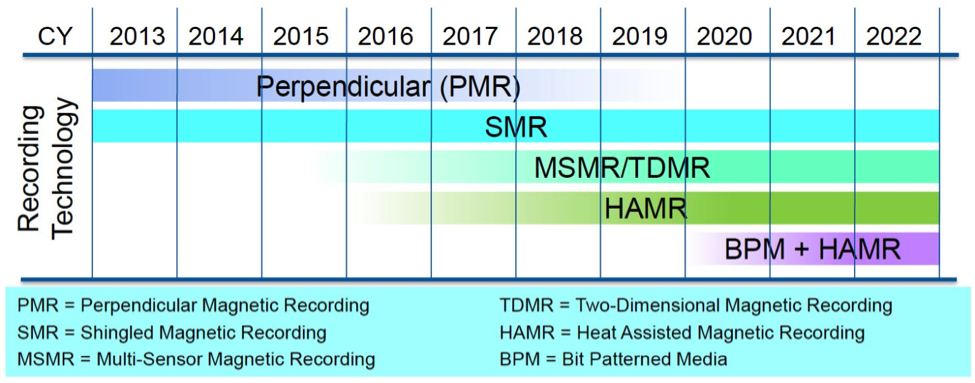Who wants a bigger hard drive?
In a way, this is why everyone needs higher-capacity hard drives:
On the left, we have a VGA resolution (640 x 480) image, typical of what might have been captured with one of the first camera phones back in 2005. Here we are, 10 years later, and phones often capture “4K” images at 3840 x 2160. That’s a 16x increase in file size, meaning that the hard drive you might have bought a decade ago will now hold 16 times fewer conventional phone images. Just 30 hours of 4K video will fill a 1 TB hard drive.
Of course, mushrooming image sizes are only the beginning. Applications have similarly ballooned. We’ve transformed business documents from text and bullet lists to works of multimedia wizardry. Certainly, we lean increasingly on the cloud for some of our data needs, but that’s like renting a storage locker — it’s still your stuff, just located somewhere else.
No matter where data lives, the inescapable fact is that the sum total of the digital universe is doubling roughly every two years, according to IDC. No matter whether you’re a student racking up Social Studies papers or a Fortune 500 CIO seeking to fuel next year’s growth with Internet of Things analytics, the odds are overwhelming that your data accumulation is compounding exponentially, not linearly, because that is how digital technologies grow. The storage capacity you have today will fill up sooner than you think.
Drives for the Deluge
If the world is flooding with data, then someone better make bigger buckets. For over 30 years, Seagate has pushed the boundaries of hard drive areal density, the amount of data that can squeeze into a square inch of magnetic platter space. In 1980, Seagate’s ST-506 became the world’s first (5.25”) desktop hard drive, and it featured a total formatted capacity of 5 MB. Today, Seagate can fit over 1,300 MB on each 3.5” platter, yielding single drive capacities of up to 8 TB with higher storage points just over the horizon.
Seagate has managed this 1.6 million times capacity expansion in 35 years thanks to a relentless assault on the boundaries of storage science. Of course, such massive advances don’t come easily. The ways in which data stores as magnetic bits on platter surfaces has undergone several major overhauls, with the current generation being perpendicular magnetic recording (PMR). Fortunately, PMR remains very stable and fast today. Unfortunately, the technology is approaching its inherent physical limits. There simply isn’t much room left to continue shrinking bit sizes (and thus increase areal density) without losing data stability. This does not bode well for keeping up with rising storage demands.
Fear not. Seagate has generational improvements mapped out for the next decade of storage growth, and the first of these, shingled magnetic recording (SMR), is already in production. As Seagate brings even more exciting advances online in the coming years, such as heat-assisted magnetic recording (HAMR) and bit-patterned media (BPM), expect to see single drive capacities reach and exceed 20 TB.
Understand Your Options
Knowing that bigger drives are en route won’t help you get on top of today’s storage challenges, though. You not only need to know what’s coming but also to grasp what drive options exist today and how these best fit your high-capacity application needs.
From consumer to NAS to surveillance to high-performance enterprise, the modern niches for hard drives are nearly as varied as users themselves. As a result, Seagate now offers a full spectrum of high-capacity drives optimized for a host of application types across the market. These drives offer more than extra space for exploding data collections. They’re designed from the ground up to improve performance, reliability, and total solution ROI for the businesses that rely on storage as an essential part of their daily operations.
—
Seagate creates space for the human experience by innovating how data is stored, shared and used. Learn more at www.seagate.com.








